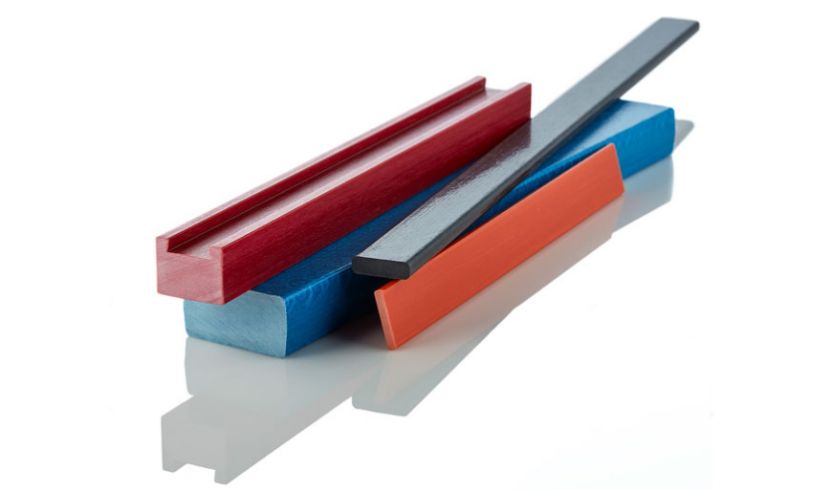What Products Are Suitable For Pultrusion Process?
Discussing the Pros and Cons of pultrusion Composite Materials and Their Applications
Asia composite materials (Thailand)co.,Ltd
The pioneers of fiberglass industry in THAILAND
E-mail:yoli@wbo-acm.com WhatsApp :+66966518165
Pultrusion composite materials are high-performance fiber-reinforced polymer (FRP) composites manufactured using a continuous process known as pultrusion.
In this process, continuous fibers (such as glass or carbon) are pulled through a bath of thermosetting resin (such as epoxy resin, polyester, or vinyl ester), and then molds are used to shape the material as desired. The resin then cures, forming a solid, lightweight, and durable composite product.

Pultrusion Resins
The matrix resin is a crucial component of pultrusion composite materials. Common Pultrusion resins include epoxy, polyurethane, phenolic, vinyl ester, and the recently widely studied thermoplastic resin systems. Due to the characteristics of pultrusion composite materials, the matrix resin needs to have low viscosity, fast reaction rates at high temperatures. When choosing the matrix resin, factors such as pultrusion reaction rate and resin viscosity need to be considered. High viscosity can affect the lubrication effect during product manufacturing.
Epoxy Resin
Pultrusion composite materials prepared with epoxy pultrusion resins exhibit high strength and can be used under high-temperature conditions, with a rapid curing
speed. However, challenges such as material brittleness, short applicability period, poor permeability, and high curing temperature limit the development of the wind power industry in China, particularly in wind turbine blade and root materials.
Polyurethane
Polyurethane resin has lower viscosity, allowing a higher glass fiber content compared to polyester or vinyl ester resins. This results in pultrusion polyurethane composite materials having a bending modulus of elasticity close to that of aluminum. Polyurethane exhibits excellent processing performance compared to other resins.
Phenolic Resin
In recent years, pultrusion composite materials using phenolic resin have gained attention due to their low toxicity, low smoke emission, flame resistance, and have found applications in areas such as rail transportation, offshore oil drilling platforms, chemical corrosion-resistant workshops, and pipelines. However, traditional phenolic resin curing reactions are slow, resulting in long molding cycles, and the formation of bubbles during rapid continuous production, affecting product performance. Acid catalysis systems are often used to overcome these challenges.
Vinyl Ester Resin
Vinyl ester alcohol resin features excellent mechanical properties, heat resistance, corrosion resistance, and rapid curing. Around the year 2000, it was one of the preferred resins for pultrusion products.
Thermoplastic Resin
Thermoplastic composites overcome the environmental drawbacks of thermosetting composites, offering strong flexibility, impact resistance, good damage tolerance, and damping properties. They resist chemical and environmental corrosion, have a fast curing process without chemical reactions, and can be rapidly processed. Common thermoplastic resins include polypropylene, nylon, polysulfide, polyether ether ketone, polyethylene, and polyamide.
Compared to traditional materials like metal, ceramics, and non-reinforced plastics, glass fiber-reinforced pultrusion composites have several advantages. They possess unique custom design capabilities to meet specific product requirements.
Advantages of Pultrusion Composite Materials:
1.Manufacturing Efficiency: Pultrusion molding is a continuous process with advantages such as high production volume, lower costs, and faster delivery times compared to alternative composite manufacturing methods.
2.High Strength-to-Weight Ratio: Pultrusion composite materials are strong and rigid yet lightweight. Carbon fiber Pultrusions are significantly lighter than metals and other materials, making them suitable for weight-sensitive applications in aerospace, automotive, and transportation.
3.Corrosion Resistance: FRP composites exhibit strong corrosion resistance, making them suitable for applications in industries such as chemical processing, marine, petroleum, and natural gas.
4.Electrical Insulation: Glass fiber pultrusions can be designed to be non-conductive, making them an ideal choice for electrical applications requiring dielectric performance.
Dimensional Stability: Pultrusion composite materials do not deform or crack over time, which is crucial for applications with precise tolerances.
5.Custom Design: Pultrusion components can be manufactured in various shapes and sizes, including rods, tubes, beams, and more complex profiles. They are highly customizable, allowing for design variations in fiber type, fiber volume, resin type, surface veil, and treatment to meet specific performance and application requirements.
Disadvantages of Using pultrusion Composite Materials:
1.Limited Geometric Shapes: Pultrusion composite materials are limited to components with constant or nearly constant cross-sections due to the continuous manufacturing process where fiber-reinforced material is pulled through molds.
2.High Manufacturing Costs: The molds used in pultrusion molding can be expensive. They need to be made from high-quality materials capable of withstanding the heat and pressure of the pultrusion process, and must be produced with strict machining tolerances.
3.Low Transverse Strength: The transverse strength of pultrusion composite materials is lower than the longitudinal strength, making them weaker in the direction perpendicular to the fibers. This can be addressed by incorporating multi-axial fabrics or fibers during the pultrusion process.
4.Difficult Repair: If Pultrusion composite materials are damaged, repairing them can be challenging. Entire components may need replacement, which can be both costly and time-consuming.
Applications of Pultrusion Composite Materials pultrusion composite materials find widespread applications in various industries, including:
1.Aerospace: Components for aircraft and spacecraft, such as control surfaces, landing gear, and structural supports.
2.Automotive: Automotive components, including drive shafts, bumpers, and suspension components.
3.Infrastructure: Reinforcement and components for infrastructure, such as sleepers, bridge decks, concrete repair and reinforcement, utility poles, electrical insulators, and crossarms.
4.Chemical Processing: Chemical processing equipment such as pipes and floor gratings.
Medical: Reinforcement for braces and endoscopic probe shafts.
5.Marine: Marine applications, including masts, battens, dock pilings, anchor pins, and docks.
6.Oil and Gas: Oil and gas applications, including wellheads, pipelines, pump rods, and platforms.
7.Wind Energy: Components for wind turbine blades, such as blade reinforcements, spar caps, and root stiffeners.
8.Sports Equipment: Components requiring constant cross-sections, such as skis, ski poles, golf equipment, oars, archery components, and tent poles.
In comparison to traditional metals and plastics, Pultrusion composite materials offer numerous advantages. If you are a materials engineer seeking high-performance composite materials for your application, Pultrusion composite materials are a viable choice.
Post time: Dec-15-2023




